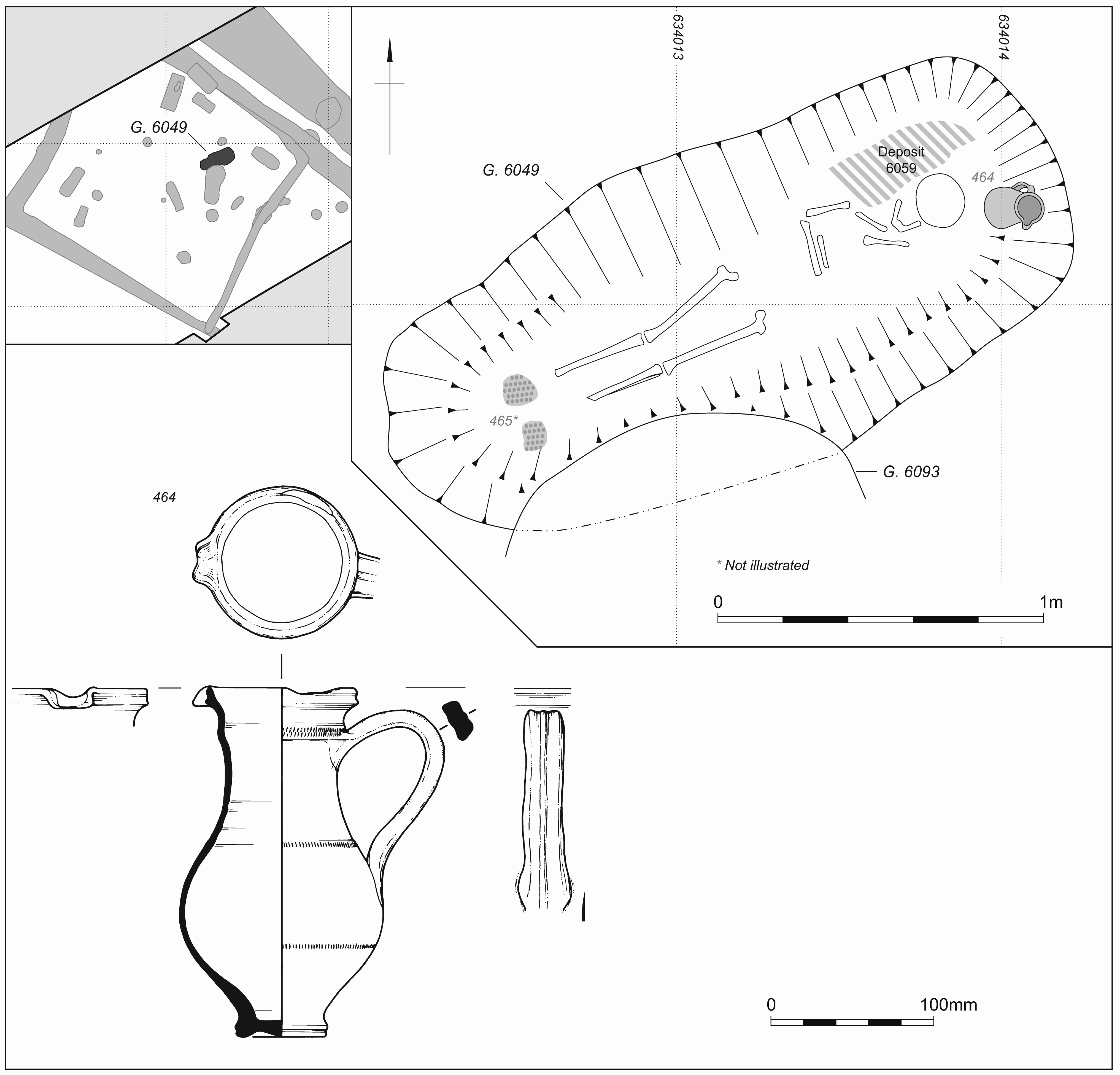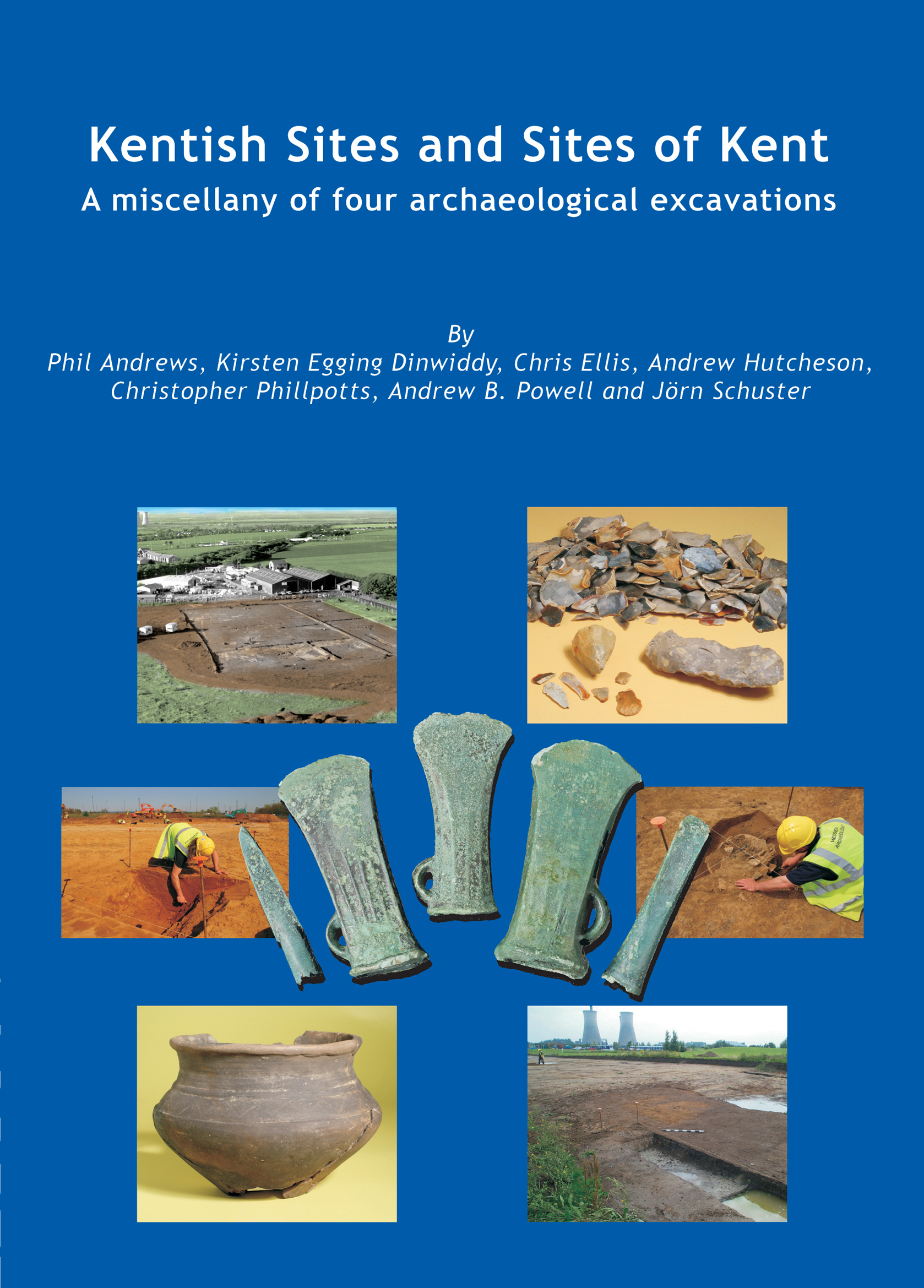We are starting to get material together for our open day and for obvious reasons we tend to focus on the ‘wow’ artefacts that draw people’s attention and sometimes forget that’s not what archaeology is about. In our search we came across a rather nice jug from an excavation at Ramsgate and decided to look into it a little further.
The jug was excavated as part of Wessex Archaeology’s work on the Margate to Weatherlees pipeline. Below left, you can see the painstaking excavation of the jug and associated skull as the jug formed part of a grave assemblage.
The photo below right shows the jug excavated as much as possible for it to maintain its position along with the uncovered skull. This is to record the precise location of the artefact in relation to the human remains.

Once the grave is uncovered it is meticulously recorded by hand and photographed to get the most
information possible. The illustration below shows the drawn skeleton and jug precisely located (georeferenced) so that we know where it came from within centimetres.

The information is then collated with other excavated evidence and published so that anyone interested can have access to the data. The jug is published in the volume below.

But this is almost the second life story of the jug. The other is more interesting and one we are trying to learn. What about how the jug got to where it was buried? We know the jug is made from Rheinzabern samian and was manufactured in the Rhineland in the late Romano-British period and ended up in a grave in Kent, but as to whether it came as part of the personal cargo of an individual or part of an established trade route are the sorts of questions we are trying to answer through understanding the life stories of these objects.
Come to our open day on 4 July and see the Rheinzabern samian jug in real (second) life!